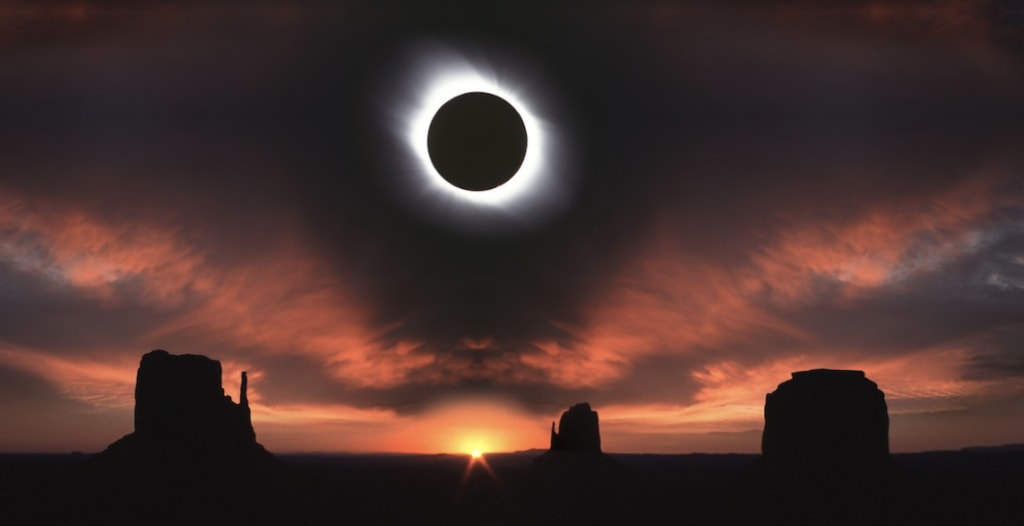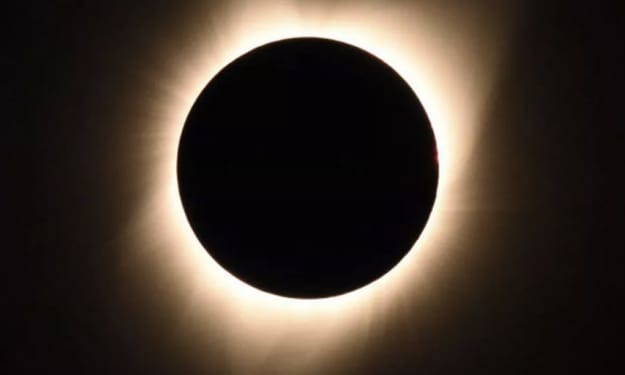Witnessing Darkness at Noon: The Rare Total Solar Eclipse of April 8th
Unlocking the Mysteries and Marvels of Celestial Alignments

Witnessing Darkness at Noon: The Rare Total Solar Eclipse of April 8th
On April 8th, 2024, a celestial spectacle unfolded across North America, captivating millions as a rare total solar eclipse traced its path of totality across the continent. This extraordinary event transformed daytime into an eerie twilight, casting vast regions into darkness in the middle of the day.
The phenomenon of a total solar eclipse occurs when the Moon aligns perfectly between the Earth and the Sun, obscuring the Sun's brilliant light. When the Moon completely covers the Sun, it results in a total solar eclipse, a breathtaking event that occurs infrequently and can only be witnessed briefly in specific regions.
In the case of the total solar eclipse of 2024, the path of totality stretched from the state of Texas, traversing across the heart of the United States, and extending all the way to the East Coast. Cities such as Dallas, Texas; Buffalo, New York; and Burlington, Vermont found themselves among the fortunate locales offering prime viewing opportunities. Spectators gathered with anticipation, equipped with solar glasses and telescopes, eagerly awaiting the rare celestial event.
But just how often do total solar eclipses grace our skies? These cosmic phenomena are indeed rare, and total solar eclipses visible from the United States are even rarer. Globally, they occur approximately once every one to three years, but their visibility is often limited to remote locations such as the polar regions or expanses of the open ocean.
Several factors contribute to the optimal viewing of a total solar eclipse. Clear skies are essential to ensure an unobstructed view of the eclipse, and being within the path of totality is crucial for experiencing the full extent of the Sun's obscuration. While those outside the path of totality may witness a partial eclipse, only those within the narrow band of totality can marvel at the awe-inspiring sight of the Sun completely engulfed by the Moon.
Reflecting on past occurrences, the last total solar eclipse took place in 2021, visible only from the icy landscapes of Antarctica. According to data from NOAA, the duration of totality lasted a mere one minute and fifty-four seconds, a fleeting moment of celestial alignment. The previous total solar eclipse visible from North America occurred in 2017, stretching from the Pacific Northwest to the Southeastern United States, captivating millions of onlookers with its majestic display.
Looking ahead, astronomy enthusiasts eagerly anticipate the next total solar eclipse, slated to occur on August 12, 2026. This forthcoming event will cast its shadow across the North Pole, eastern Greenland, northern Spain, and the enchanting landscapes of Iceland, offering yet another opportunity for celestial marvel.
However, for those within the contiguous United States longing to witness the extraordinary spectacle of a total solar eclipse, patience will be required. The next opportunity to experience such an event within the borders of the United States won't arise until August 2044, a distant date that beckons the passage of time.
In conclusion, the rare occurrence of a total solar eclipse serves as a poignant reminder of the profound beauty and precision of the cosmos. These celestial ballets captivate our imaginations, offering a glimpse into the intricate dance of celestial bodies that govern our universe. As we marvel at the fleeting moments of totality, we are reminded of our place within the vast expanse of the cosmos, where the wonders of the universe continue to inspire awe and wonderment.
Total solar eclipses have fascinated humanity for millennia, serving as sources of both awe and fear. Ancient civilizations often interpreted eclipses as omens or celestial battles between gods, while modern science has unlocked the mysteries behind these awe-inspiring events. The study of eclipses has contributed significantly to our understanding of celestial mechanics, allowing astronomers to make precise predictions about their occurrence and paths of totality.
In addition to their scientific significance, total solar eclipses hold cultural and spiritual importance for many societies around the world. In some indigenous cultures, eclipses are viewed as transformative moments, representing opportunities for introspection and renewal. Rituals and ceremonies are often performed during eclipses, symbolizing the alignment of the celestial and earthly realms.
Moreover, total solar eclipses provide unique opportunities for scientific research and public engagement. Astronomers use eclipses to study the Sun's outer atmosphere, known as the corona, which is typically hidden from view by the Sun's glare. During totality, scientists can observe phenomena such as solar flares, prominences, and coronal mass ejections, shedding light on the Sun's dynamic behavior.
Furthermore, total solar eclipses have the power to unite people from diverse backgrounds in shared awe and wonder. Communities often come together to witness these rare events, organizing viewing parties, educational programs, and outreach events. The collective experience of observing a total solar eclipse fosters a sense of connection to the cosmos and a deeper appreciation for the wonders of the universe.
As humanity continues to explore the cosmos and unravel the mysteries of the universe, total solar eclipses remain as timeless reminders of the beauty and majesty of our celestial surroundings. With each passing eclipse, we are reminded of the delicate balance of forces that shape our universe and the profound interconnectedness of all things.





Comments (1)
a beautiful piece there